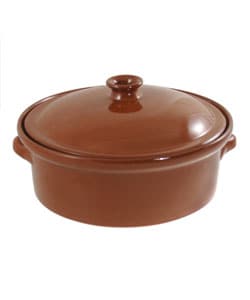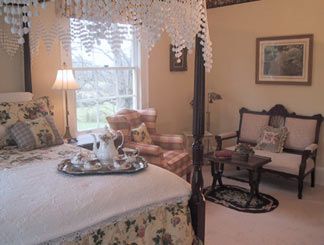E. I. du Pont de Nemours and Company (
NYSE:
DDPRA,
NYSE:
DDPRB,
NYSE:
DD) was founded in July 1802 as a
gun powder mill by
Eleuthère Irénée du Pont on
Brandywine Creek, near
Wilmington, Delaware,
USA. DuPont is currently the world's second largest chemical company (behind
BASF) in terms of
market capitalization and fourth (behind BASF,
Dow Chemical and
Ineos) in revenue. It is also a component of the
Dow Jones Industrial Average.
In the
twentieth century, DuPont led the
polymer revolution by developing many highly successful materials such as
Vespel,
neoprene,
nylon,
Corian,
Teflon,
Mylar,
Kevlar,
M5 fiber,
Nomex,
Tyvek and
Lycra. DuPont has also been significantly involved in the
refrigerant industry, developing and producing the
Freon (CFCs) series and later, more environmentally-friendly refrigerants. In the paint and pigment industry, it has created synthetic pigments and paints, such as
ChromaFlair.
DuPont is often successful in popularizing the brands of its material products such that their
trademark names become
more commonly used than the generic or chemical word(s) for the material itself. One example is "neoprene", which was intended originally to be a trademark but quickly came into common usage.
History DuPont was founded in 1802 by
Eleuthère Irénée du Pont, two years after he and his family left
France to escape the
French Revolution. The company began as a manufacturer of gunpowder, as he had noticed that the industry out in North America was lagging behind Europe and saw a market for it. The company grew quickly, and by the mid nineteenth century had become the largest supplier of gunpowder to the
United States military, supplying as much as half of the powder used by the
Union Army during the
American Civil War.
1902 to 1912 In 1914,
Pierre S. du Pont, invested in the fledgling
automobile industry, buying stock of
General Motors (GM). The following year he was invited to sit on GM's board of directors and would eventually be appointed the company's chairman. The DuPont company would assist the struggling automobile company further with a $25 million purchase of GM stock. In 1920, Pierre S. du Pont was elected president of General Motors. Under du Pont's guidance, GM became the number one automobile company in the world. However, in 1957, because of DuPont's influence within GM, further action under the
Clayton Antitrust Act forced the DuPont Company to divest itself of its shares of General Motors.
1914 In the 1920s DuPont continued its emphasis on
materials science, hiring
Wallace Carothers to work on
polymers in 1928. Carothers discovered
neoprene, the first
synthetic rubber, the first
polyester superpolymer and in 1935,
nylon. Discovery of
Lucite and
Teflon followed a few years later. 1935 was also the year that DuPont first introduced the chemical
Phenothiazine as an insecticide.
1920 Throughout this period, the company continued to be a major producer of war supplies in both
World War I and
World War II, and played a major role in the
Manhattan Project in
1943, designing, building and operating the
Hanford plutonium producing plant and the
Savannah River Plant in
South Carolina.
1943 After the war, DuPont continued its emphasis on new materials, developing
Mylar,
Dacron,
Orlon and
Lycra in the 1950s, and
Tyvek,
Nomex,
Qiana,
Corfam and
Corian in the 1960s. DuPont materials were critical to the success of the
Apollo Space program. DuPont has been the key company behind the development of modern
body armour. In World War II DuPont's ballistic nylon was used by the
RAF to make
FLAK Jackets. With the development of
Kevlar in the 1960s DuPont began tests to see if it could resist a lead bullet. This research would ultimately lead to the bullet resistant vests that are the mainstay of police and military units in the industrialized world.
1950 to 1970 In 1981, DuPont acquired
Conoco Inc., a major American oil and gas producing company that gave it a secure source of petroleum feedstocks needed for the manufacturing of many of its fiber and plastics processes. The acquisition, which made DuPont one of the top ten U.S. based petroleum and natural gas producers and refiners, came about after a bidding war with the giant
distillery,
Seagram Company Ltd. who would wind up as DuPont's largest single shareholder with four seats on the board of directors. On April 6, 1995, after being approached by Seagram Chief Executive Officer
Edgar Bronfman, Jr., DuPont announced a deal whereby the company would buy back all the shares held by Seagram.
1981 to 1995 In 1999, DuPont sold all of its Conoco shares, the business merging with
Phillips Petroleum Company. That year, CEO
Chad Holliday switched the company's focus towards growing DuPont chemicals from living plants rather than processing them from
petroleum.
1999 DuPont describes itself as a global science company that employs more than 60,000 people worldwide and has a diverse array of product offerings.
Current activities DuPont is widely known for their sponsorship of
NASCAR driver
Jeff Gordon and his
Hendrick Motorsports #24
Chevrolet Monte Carlo. DuPont has been sponsoring Jeff Gordon since he began in
NEXTEL Cup (then Winston Cup) in
1992. DuPont has said this about their sponsorship:
Our sponsorship of Jeff Gordon helps keep DuPont brands and products in the public eye. Branding is a key component of the DuPont knowledge intensity strategy for achieving sustainable growth.
[1] In
2007, DuPont and
Jeff Gordon and
Hendrick Motorsports are currently celebrating the 15th season together, and is currently the longest driver/sponsor/owner combination in
NASCAR.
NASCAR sponsorship Corporate governance Charles O. Holliday - CEO
Alain J. P. Belda Richard H. (Dick) Brown Curtis J. Crawford John T. Dillon There du Pont Lois D. Juliber Masahisa Naitoh Sean O'Keefe William K. Reilly Charles M. Vest Current board of directors Controversies It is often asserted in pro-cannabis publications that DuPont actively supported the criminalization of the production of
hemp in the US in 1937 through private and government intermediates, and alleged that this was done to eliminate hemp as a source of
fiber — one of DuPont's biggest markets at the time. The company denies these allegations.
Hemp In
1941, an investigation of
Standard Oil Co. and
IG Farben brought evidence concerning complex price and marketing agreements between DuPont,
U.S. Industrial Alcohol Company, and their subsidiary
Cuba Distilling Company. The investigation was eventually dropped, like dozens of others in many different kinds of industries, because of the need to enlist industry support in the war effort.
Price fixing In
1974,
Gerard Colby Zilg, wrote
Du Pont: Behind the Nylon Curtain, a critical account of the role of the DuPont family in American social, political and economic history. The book was nominated for a
National Book Award in 1974.
A du Pont family member obtained an advance copy of the manuscript and was "predictably outraged". A DuPont official contacted The Fortune Book Club and stated that the book was "scurrilous" and "actionable" but produced no evidence to counter the charges. The Fortune Book Club (a subsidiary of the Book of the Month Club) reversed its decision to distribute Zilg's book. The editor-in-chief of the Book of the Month Club declared that the book was "malicious" and had an "objectionable tone". Prentice-Hall removed several inaccurate passages from the page proofs of the book, and cut the first printing from 15,000 to 10,000 copies, stating that 5,000 copies no longer were needed for the book club distribution. The proposed advertising budget was reduced from $15,000 to $5,000.
Mr. Zilg sued Prentice-Hall (Zilg v. Prentice-Hall), accusing it of reneging on a contract to promote sales.
The Federal District Court ruled that
Prentice Hall had privished the book (the company conducting an inadequate merchandising effort after concluding that the book did not meet its expectations as to quality or marketability) and breached its obligation to Zilg to exert its best efforts in promoting the book because the publisher had no valid business reason for reducing the first printing or the advertising budget. The court also ruled that the DuPont Company had a constitutionally protected interest in discussing its good faith opinion of the merits of Zilg's work with the book clubs and the publisher, and found that the company had not engaged in threats of economic coercion or baseless litigation.
The United States Court of Appeals for the Second Circuit overturned the damages award in September of
1983. The court stated that, while DuPont's actions "surely" resulted in the book clubs' decision not to distribute Zilg's work and also resulted in a change in Prentice-Hall's previously supportive attitude toward the book, DuPont's conduct was not actionable. The court further stated that the contract did not contain an explicit "best efforts" or "promote fully" promise, much less an agreement to make certain specific promotional efforts. Printing and advertising decisions were within Prentice-Hall's discretion.
Zilg lost a
Supreme Court appeal in April
1984.
In 1984
Lyle Stuart re-released an extended version,
Du Pont Dynasty: Behind the Nylon Curtain.
"Behind the nylon curtain" Along with
General Motors, DuPont was the inventor of CFCs (
chlorofluorocarbons), and the largest producer of these
ozone depleting chemicals (used primarily in
aerosol sprays and
refrigerants) in the world, with a 25% market share in the late
1980s.
In 1974, responding to public concern about the safety of CFCs, In 2003, DuPont was awarded the
National Medal of Technology, recognizing the company as the leader in developing CFC replacements.
Chlorofluorocarbons In a report submitted by Saddam Hussein to the United Nations shortly before the 2003 invasion of Iraq, it was revealed that DuPont had participated in Iraq's nuclear weapons program. (Though the U.S. attempted to redact the names of all U.S. companies involved, an uncensored copy was leaked to the press.) DuPont has not faced any sanctions because of this. The company denies that it sold materials to Iraq for any nuclear weapons program.
Iraq's nuclear program DuPont has a mixed environmental record, receiving praise from some for environmentally friendly practices while at the same time incurring large government fines and stern criticism from environmental researchers. In 2005,
BusinessWeek magazine, in conjunction with the
Climate Group, ranked DuPont as No.1 of "The Top Green Companies."
Environmental record DuPont was four times awarded the
National Medal of Technology, first in 1990, for its invention of "high-performance man-made polymers such as nylon, neoprene rubber, "Teflon" fluorocarbon resin, and a wide spectrum of new fibers, films, and engineering plastics"; the second for 2002 "for policy and technology leadership in the phaseout and replacement of chlorofluorocarbons." Additionally, DuPont scientist George Levitt was honored with the medal in 1993 for the development of sulfonylureas – environmentally friendly herbicides for every major food crop in the world. In 1996, DuPont scientist Stephanie Kwolek was recognized for the discovery and development of Kevlar.
 Further reading Alfred I. duPont Hospital for Children DuPont and C-8 Du Pont family Hagley Museum and Library Longwood Gardens
Further reading Alfred I. duPont Hospital for Children DuPont and C-8 Du Pont family Hagley Museum and Library Longwood Gardens




 Exceptions and abrogation
Exceptions and abrogation
 Further reading
Further reading
 Quotes
Quotes

 History of bathrooms
History of bathrooms
 American Colonies
American Colonies Family
Family History
History female: 97.2% (2003 est.)
female: 97.2% (2003 est.) Marriage
Marriage Death
Death Organizational structure
Organizational structure